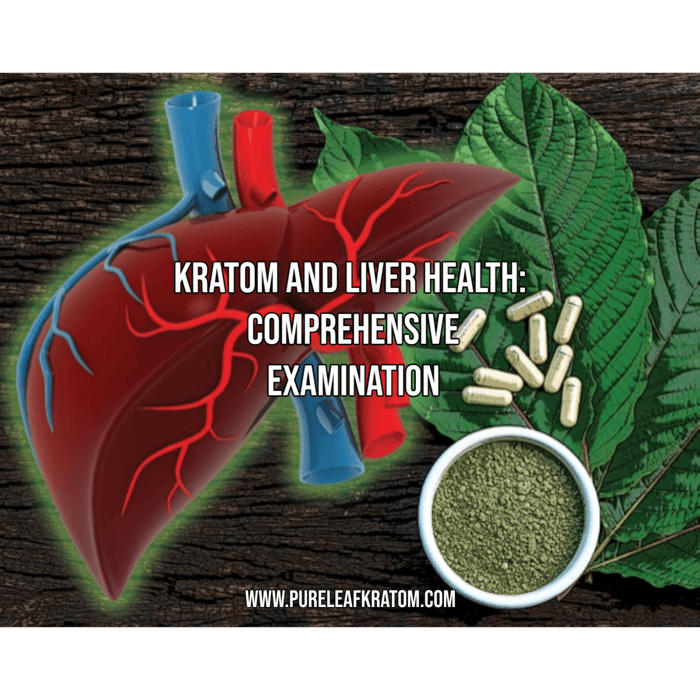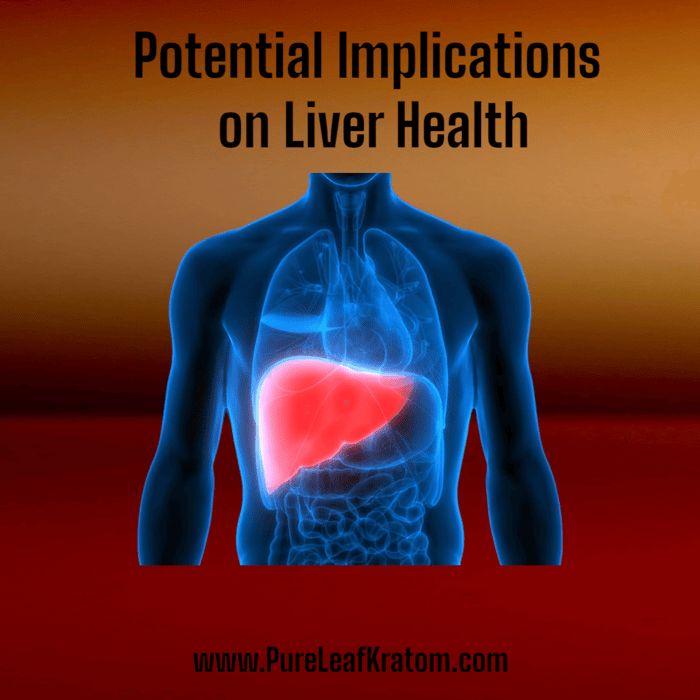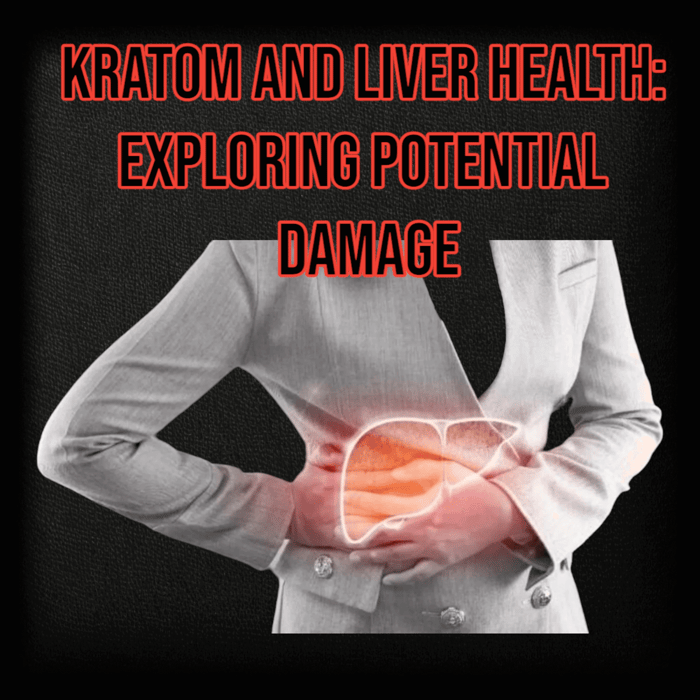
Does Kratom Cause Liver Damage? The Negotiation between Kratom and the Liver Health
An Overview of Kratom: From Origins to Effects
Kratom, scientifically Mitragyna speciosa, thrives in Southeast Asia. Derived from the coffee family, its leaves contain stimulant and opioid-like compounds. Used in various forms, it boasts a rich legacy in Asian cultures, including traditional medicine. While its cultural significance endures, debates about its potential effects on liver health have sparked discussions in the medical community.
Unraveling the Biochemical Composition of Kratom
A closer look at the biochemical framework that makes Kratom unique reveals the dominant presence of two psychoactive compounds primarily - mitragynine and 7-hydroxymitragynine. These compounds have the ability to interact with opioid receptors in the human brain, inducing a variety of effects. However, they do differ significantly from classical opioids in terms of their risk of respiratory depression and overdose. Moreover, the full spectrum of Kratom's biochemical composition and its effects on various bodily systems is still a subject of ongoing research.
Hush Kratom Ultra Shot Extract 10mL

$11.69
Hush Kratom Ultra Shot Extract Are you ready to take your Kratom experience to an entirely new level? Look no further than the Hush Ultra...… read more
Kratom’s Recreational Use and Related Euphoria
Owing to its complex biochemical framework, Kratom has become increasingly popular within the sphere of recreational substance use. When consumed in controlled quantities, it’s allegedly believed to induce a state of euphoria. However, its dosage and effect are highly individualistic, with some reporting a stimulant effect at smaller doses and more sedative, opioid-like effects at higher dosages. It's estimated that about 1.7 million Americans used kratom in 2021 for a variety of reasons.
Medical Use and Therapeutic Possibilities of Kratom
Despite its burgeoning reputation as a recreational substance, Kratom has also been highlighted for its potential therapeutic uses. People reportedly use Kratom to manage opioid withdrawal symptoms, alleviate various types of pain, and manage mental health conditions such as depression and anxiety. However, it is noteworthy that most of these believed therapeutic uses are anecdotal and often unregulated. The lack of rigorous scientific studies precludes us from definitively endorsing Kratom's medical effectiveness. Hence, more research is crucial to establish its therapeutic potential.
Potential Kratom Dependency and Withdrawal
While the benefits of Kratom are a point of interest for many, it's crucial to not ignore the potential repercussions that come with its use. Insatiable consumption and over-dependence on Kratom, much like any psychoactive substance, is known to lead to the development of a dependency syndrome. Symptoms can range from mild to severe and may even involve organ damage. Furthermore, when Kratom usage is abruptly discontinued, withdrawal symptoms have been reported, thus underscoring the need for its careful usage.
Kratom: A Rising Concern
While Kratom's ability to interact with the opioid receptors in our brains does it the potential to manage pain or induce states of euphoria, it presents an unfamiliar landscape with many hidden pitfalls. The general consensus among health organizations and researchers is a call for more comprehensive studies to understand the full health effects of Kratom. As we continue to explore Kratom's potential, it’s imperative to exercise caution and make informed choices about its consumption.
K Tropix Kratom Enhanced Nootropic Capsules
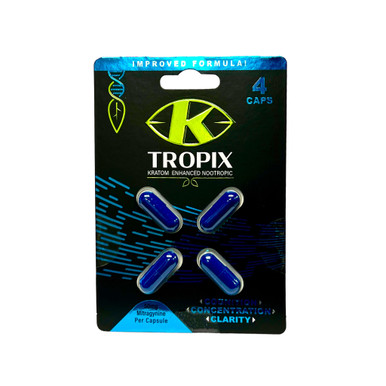
$19.75
K Tropix Kratom Enhanced Nootropic Capsules Experience the fusion of pure kratom and effective neuroenhancers with K Tropix Kratom Enhanced Nootropic Capsules. Perfect for those...… read more
Elucidating the Connection Between Kratom and Liver Damage
In recent years, researchers have been paying closer attention to the association between the regular consumption of Kratom and the onset of acute liver damage. Despite its appealing euphoric effects and potential therapeutical benefits, misuse of Kratom can come at a cost to one’s liver health.
Examining the Alleged Link Between Kratom and Liver Injury
Some accounts show a correlation between Kratom use and liver injury. Documented cases reveal a pattern: problems usually occur within 1-8 weeks of regular use and present with symptoms such as fatigue, nausea, itching, dark urine, and jaundice. In some instances, severe conditions like cholestasis and bone marrow toxicity have also been reported. Severe cases of liver damage associated with Kratom often involve additional complications such as co-ingestion of other substances or pre-existing liver disease, which complicates the determination of Kratom as the root cause.[TABLE id="1"]
Unpacking the Effects of Potentially Harmful Substances on the Liver
The liver health is crucial to numerous metabolic functions and the detoxification of harmful substances in the body. Several mechanisms contribute to liver damage when strained by toxic substances:
Explanation of Liver Inflammation and Cirrhosis
Inflammation of the liver, or hepatitis, is often the body’s initial response to injury or infection. It can result from viral infections, alcohol misuse, autoimmune diseases, and toxic substances, among other sources. If inflammation persists, it can lead to the progressive destruction and scarring of liver tissues – a condition known as cirrhosis. Cirrhosis severely disrupts the structure and function of the liver, impairing its ability to detoxify the blood, process nutrients, and regulate hormones and drugs.
Roles of Fibrosis and Metabolic Dysfunctions in Liver Health
Fibrosis is the process by which the liver attempts to heal itself following injury by replacing damaged tissues with scar tissue. However, intense or prolonged injuries may cause excessive fibrosis that inhibits the liver's normal function. Metabolic dysfunctions are another adverse effect of liver damage. For instance, illnesses such as fatty liver disease occur when the liver is unable to break down fats, leading to their accumulation and potentially causing inflammation and cirrhosis over time.
Discussion on Regenerative Capabilities of the Liver
Remarkably, the liver has a robust capacity to regenerate. Given time and the right conditions, healthy liver hepatocytes can proliferate to replace damaged or lost tissue, even in cases of diseases like hepatitis. This capability underscores the importance of immediate cessation of substances – such as Kratom in harmful quantities – that could continue to injure the liver and impede this crucial regenerative process.
Understanding Kratom-Induced Liver Damage
Identifying problems early can be critical in preventing severe liver damage linked to Kratom use. Symptoms can start to show anywhere within the first 1-8 weeks of regular usage. Identifying these issues early and ceasing Kratom use can, in many cases, lead to the liver recovering on its own without any additional treatment (source).
Identification of Symptoms and Manifestation of Kratom-Induced Liver Damage
While the full range of potential symptoms caused by Kratom usage can vary widely, there are a few common symptoms to be aware of. Early signs of potential liver issues often include fatigue and nausea, which tend to be subtle and can be easily overlooked or attributed to other causes (source).
Darker urine can be a clear signal that liver problems are beginning to escalate. As the liver continues to struggle with the toxicity, additional symptoms like pruritus, or itchiness, typically start to present themselves. If usage continues, one of the most severe signs, jaundice (a yellowing of the skin), might start to manifest (source).
Further complications can include acute renal failure and even bone marrow toxicity, both of which indicate severe liver dysfunction. In the face of these symptoms, immediate cessation of Kratom usage and seeking prompt medical attention is advised (source).
Potential Adverse Effects Associated with High Kratom Consumption
While this paper focuses on potential liver health damage, it is worth noting that Kratom consumption can lead to other serious health issues, both physical and psychological. Again, these risks seem to correlate with the amount consumed – higher doses naturally leading to the potential for more severe effects.
On a physical front, there have been reported instances of respiratory depression. Slowed respirations can lead to a dangerous reduction in blood oxygen levels if unchecked (source).
Mental health risks are also present. High consumption of Kratom can result in heightened aggression, severe hallucinations, and paranoia (source). At the extreme end, abusers have been known to suffer sleep disturbances, such as insomnia (source).
In conclusion, Kratom is a complex natural psychoactive substance that has potential benefits when controlled, but can lead to harmful effects, including acute liver injury, when used recklessly. Therefore, thoughtful usage, awareness of early signs as mentioned, and prompt cessation if problems arise, are key to avoiding severe adverse liver health issues related to Kratom ingestion.
While Kratom has long been used for its medicinal properties, mounting evidence indicates it can lead to acute liver injury in some users. Yet, the precise inner mechanics that cause this damage remains a subject of ongoing exploration and debate.
Bumble Bee Kratom Capsules White Borneo
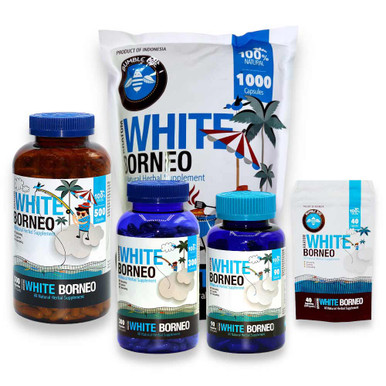
$7.29
Bumble Bee Kratom Capsules White Borneo It’s pure and authentic Bumble Bee Kratom Capsules White Borneo like you’ve never tried before! Wonder why? There is...… read more
Synopsis of the Proposed Molecular Mechanism
At the heart of concerns about Kratom's interaction with liver health are two key entities: liver enzymes and hepatocytes. Kratom compounds, specifically mitragynine and 7-hydroxymitragynine, are metabolized in the liver, primarily by enzymes of the cytochrome P450 system.In one case study involving a woman who had used a minimal amount of Kratom, an alarming elevation in liver enzymes was found within just 2 weeks. Her liver biopsy revealed centrilobular cholestasis, moderate portal inflammation, and lymphocytic cholangitis, conditions which are characteristic of primary biliary cholangitis (PBC), a disease that affects the bile ducts in the liver.
In another published case, a 38-year-old man showed symptoms of liver damage after Kratom usage, including bile duct injury accompanied by lymphocytic infiltration—indicating Kratom-induced cholestatic liver injury. Lymphocyte-mediated injury to the bile ducts and ductules was observed, which was reversible after the cessation of Kratom use.
Comparative Analysis with other known Liver Disease Causes
To fully understand Kratom's impact on liver health, it is instructive to compare it with other known causal factors for liver disease. Factors like alcohol abuse, viral infections, and autoimmune diseases have a well-documented role in liver damage, mainly through ongoing inflammation and subsequent fibrosis and cirrhosis (chronic liver disease). Steatosis and insulin resistance are other frequent contributors seen in alcohol-related liver disease and non-alcoholic fatty liver disease. These conditions also upregulate inflammatory mediators and disrupt lipid metabolism, thereby elevating cardiovascular risk (compare liver diseases). It’s worth explicitly noting that progression rates and disease severity can substantially vary depending upon the etiological factors and individual's genetic polymorphisms.
Interestingly, Kratom-induced liver health damage exhibits features akin to primary biliary cirrhosis, despite the fact that its hepatotoxicity manifests primarily as cholestasis and hepatocellular injury. The exact parallels and contrasts between Kratom’s effects and these other liver diseases remain to be fully explored through further research.
To summarize, the precise mechanism of Kratom-induced liver injury is still under examination. However, current research points towards an interaction with liver enzymes and hepatocytes, impacting bile ducts and overall liver detoxification. As Kratom continues to gain traction globally, understanding its potential liver toxicity becomes increasingly crucial to ensure safe usage and protect public health.


